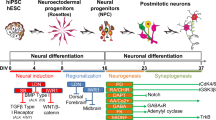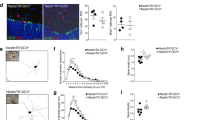Abstract
A neurological disorder is any disorder or abnormality in the nervous system. Among different neurological disorders, Alzheimer’s disease (AD) is recognized as the sixth leading cause of death globally. Considerable research has been conducted to find pioneer treatments for this devastating disorder among which cell therapy has attracted remarkable attentions over the last decade. Up to now, targeted differentiation into specific desirable cell types has remained a major obstacle to clinical application of cell therapy. Also, potential risks including uncontrolled growth of stem cells could be disastrous. In our novel protocol, we used basal forebrain cholinergic progenitor cells (BFCN) derived from human chorion-derived mesenchymal stem cells (hC-MSCs) which made it possible to obtain high-quality population of cholinergic neurons and in vivo in much shorter time period than previous established methods. Remarkably, the transplanted progenitors fully differentiated to cholinergic neurons which in turn integrated in higher cortical networks of host brains, resulting in significant improvement in cognitive assessments. This method may have profound implications in cell therapies for any other neurodegenerative disorders.

ᅟ






Similar content being viewed by others
Change history
26 April 2018
The original version of this article unfortunately contained mistake in the affiliation. Affiliation 1 should be read as “Neuroscience Research Center, Baqiyatallah University of Medical Sciences, Tehran, Iran”. The original article has been corrected.
References
Palop JJ, Mucke L (2010) Amyloid-[beta]-induced neuronal dysfunction in Alzheimer’s disease: from synapses toward neural networks. Nat Neurosci 13:812–818
Reitz C, Brayne C, Mayeux R (2011) Epidemiology of Alzheimer disease. Nat Rev Neurol 7:137–152
Hajipour MJ, Santoso MR, Rezaee F, Aghaverdi H, Mahmoudi M, Perry G (2017) Advances in Alzheimer’s diagnosis and therapy: the implications of nanotechnology. Trends Biotechnol 35:937–953
Kondo A, Shahpasand K, Mannix R, Qiu J, Moncaster J, Chen C-H, Yao Y, Lin Y-M et al (2015) Antibody against early driver of neurodegeneration cis P-tau blocks brain injury and tauopathy. Nature 523:431–436
Nakao N, Shintani-Mizushima A, Kakishita K, Itakura T (2006) Transplantation of autologous sympathetic neurons as a potential strategy to restore metabolic functions of the damaged nigrostriatal dopamine nerve terminals in Parkinson’s disease. Brain Res Rev 52:244–256
Gu G, Zhang W, Li M, Ni J, Wang P (2015) Transplantation of NSC-derived cholinergic neuron-like cells improves cognitive function in APP/PS1 transgenic mice. Neuroscience 291:81–92
Hess DC, Sila CA, Furlan AJ, Wechsler LR, Switzer JA, Mays RW (2014) A double‐blind placebo‐controlled clinical evaluation of MultiStem for the treatment of ischemic stroke. Int J Stroke 9:381–386
Liu X, Ye R, Yan T, Yu SP, Wei L, Xu G, Fan X, Jiang Y et al (2014) Cell based therapies for ischemic stroke: from basic science to bedside. Prog Neurobiol 115:92–115
Goldman S (2005) Stem and progenitor cell-based therapy of the human central nervous system. Nat Biotechnol 23:862–871
Goldman SA (2016) Stem and progenitor cell-based therapy of the central nervous system: hopes, hype, and wishful thinking. Cell Stem Cell 18:174–188
Seminatore C, Polentes J, Ellman D, Kozubenko N, Itier V, Tine S, Tritschler L, Brenot M et al (2010) The postischemic environment differentially impacts teratoma or tumor formation after transplantation of human embryonic stem cell-derived neural progenitors. Stroke 41:153–159
Bond AM, Ming G-L, Song H (2015) Adult mammalian neural stem cells and neurogenesis: five decades later. Cell Stem Cell 17:385–395
Eckert A, Huang L, Gonzalez R, Kim H-S, Hamblin MH, Lee J-P (2015) Bystander effect fuels human induced pluripotent stem cell‐derived neural stem cells to quickly attenuate early stage neurological deficits after stroke. Stem Cells Transl Med 4:841–851
Fox IJ, Daley GQ, Goldman SA, Huard J, Kamp TJ, Trucco M (2014) Use of differentiated pluripotent stem cells in replacement therapy for treating disease. Science 345:1247391
Amini N, Vousooghi N, Soleimani M, Samadikuchaksaraei A, Akbari M, Safakheil H, Atafimanesh P, Shahbazi A et al (2017) A new rat model of neonatal bilirubin encephalopathy (kernicterus). J Pharmacol Toxicol Methods 84:44–50
Tabar V, Studer L (2014) Pluripotent stem cells in regenerative medicine: challenges and recent progress. Nat Rev Genet 15:82
Kells AP, Fong DM, Dragunow M, During MJ, Young D, Connor B (2004) AAV-mediated gene delivery of BDNF or GDNF is neuroprotective in a model of Huntington disease. Mol Ther 9:682–688
Kriks S, Shim J-W, Piao J, Ganat YM, Wakeman DR, Xie Z, Carrillo-Reid L, Auyeung G et al (2011) Dopamine neurons derived from human ES cells efficiently engraft in animal models of Parkinson’s disease. Nature 480:547–551
Paxinos G, Watson C (2005) The rat brain stereotaxic coordinates. Academic Press, Sidney
Faghihi F, Mirzaei E, Ai J, Lotfi A, Sayahpour FA, Barough SE, Joghataei MT (2016) Differentiation potential of human chorion-derived mesenchymal stem cells into motor neuron-like cells in two-and three-dimensional culture systems. Mol Neurobiol 53(3):1862–1872
Aliaghaei A, Digaleh H, Khodagholi F, Ahmadiani A (2015) Encapsulated choroid plexus epithelial cells actively protect against intrahippocampal aβ-induced long-term memory dysfunction; upregulation of effective neurogenesis with the abrogated apoptosis and neuroinflammation. J Mol Neurosci 56:708–721
Liu Y, Weick JP, Liu H, Krencik R, Zhang X, Ma L, Zhou G-M, Ayala M et al (2013a) Medial ganglionic eminence-like cells derived from human embryonic stem cells correct learning and memory deficits. Nat Biotechnol 31:440–447
Kim JY, Kim DH, Kim JH, Lee D, Jeon HB, Kwon SJ, Kim SM et al (2012) Soluble intracellular adhesion molecule-1 secreted by human umbilical cord blood-derived mesenchymal stem cell reduces amyloid-β plaques. Cell Death Differ 19(4):680
Dessaud E, Yang LL, Hill K, Cox B, Ulloa F, Ribeiro A, Mynett A, Novitch BG et al (2007) Interpretation of the sonic hedgehog morphogen gradient by a temporal adaptation mechanism. Nature 450:717–720
Noelanders R, Vleminckx K (2017) How Wnt signaling builds the brain: bridging development and disease. Neuroscientist 23:314–329
Horowitz A, Yang J, Cai J, Iacovitti L (2017) The versatility of RhoA activities in neural differentiation. Small GTPases 1–7
Bissonnette CJ, Lyass L, Bhattacharyya BJ, Belmadani A, Miller RJ, Kessler JA (2011) The controlled generation of functional basal forebrain cholinergic neurons from human embryonic stem cells. Stem Cells 29:802–811
Duan L, Bhattacharyya BJ, Belmadani A, Pan L, Miller RJ, Kessler JA (2014) Stem cell derived basal forebrain cholinergic neurons from Alzheimer’s disease patients are more susceptible to cell death. Mol Neurodegener 9:3
Liu Y, Weick JP, Liu H, Krencik R, Zhang X, Ma L, Zhou G-M, Ayala M et al (2013) Medial ganglionic eminence-like cells derived from human embryonic stem cells correct learning and memory deficits. Nat Biotechnol 31:440–447
Zhang W, Wang P-J, Sha H-Y, Ni J, Li M-H, Gu G-J (2014) Neural stem cell transplants improve cognitive function without altering amyloid pathology in an APP/PS1 double transgenic model of Alzheimer’s disease. Mol Neurobiol 50:423–437
Emborg ME, Ebert AD, Moirano J, Peng S, Suzuki M, Capowski E, Joers V, Roitberg BZ et al (2008) GDNF-secreting human neural progenitor cells increase tyrosine hydroxylase and VMAT2 expression in MPTP-treated cynomolgus monkeys. Cell Transplant 17:383–395
Kim J, Ha S, Shin K, Kim S, Lee K, Chong Y, Chang K, Suh Y (2015) Neural stem cell transplantation at critical period improves learning and memory through restoring synaptic impairment in Alzheimer’s disease mouse model. Cell Death Dis 6:e1789
Lee JH, Oh I-H, Lim HK (2016) Stem cell therapy: a prospective treatment for Alzheimer’s disease. Psychiatry Investig 13:583–589
Amariglio N, Hirshberg A, Scheithauer BW, Cohen Y, Loewenthal R, Trakhtenbrot L, Paz N, Koren-Michowitz M et al (2009) Donor-derived brain tumor following neural stem cell transplantation in an ataxia telangiectasia patient. PLoS Med 6:e1000029
Itakura G, Kawabata S, Ando M, Nishiyama Y, Sugai K, Ozaki M, Iida T, Ookubo T et al (2017) Fail-safe system against potential tumorigenicity after transplantation of iPSC derivatives. Stem Cell Rep 8:673–684
Kaneko S, Yamanaka S (2013) To be immunogenic, or not to be: that’s the iPSC question. Cell Stem Cell 12:385–386
Roy NS, Cleren C, Singh SK, Yang L, Beal MF, Goldman SA (2006) Functional engraftment of human ES cell-derived dopaminergic neurons enriched by coculture with telomerase-immortalized midbrain astrocytes. Nat Med 12:1259
Yue W, Li Y, Zhang T, Jiang M, Qian Y, Zhang M, Sheng N et al (2015) ESCderived basal forebrain cholinergic neurons ameliorate the cognitive symptoms associated with Alzheimer’s disease in mouse models. Stem Cell Rep 5(5):776–790
Acknowledgements
This work was carried out within the framework of a collaborative project (Project Grant No. 94-02-30-25922) by the School of Medicine, Iran University of Medical Sciences, (Project Grant No. REP209) council for stem cell sciences and technologies (Presidency of the Islamic Republic of Iran, vice-presidency for science and technology), and Iran National Science Foundation (INSF).
Author information
Authors and Affiliations
Corresponding authors
Ethics declarations
Conflict of Interest
The authors declare that they have no conflict of interest.
Additional information
The original version of this article was revised: Affiliation 1 should be read as “Neuroscience Research Center, Baqiyatallah University of Medical Sciences, Tehran, Iran”.
Electronic Supplementary Material
ESM 1
(DOCX 13248 kb).
Rights and permissions
About this article
Cite this article
Mohammadi, A., Maleki-Jamshid, A., Sanooghi, D. et al. Transplantation of Human Chorion-Derived Cholinergic Progenitor Cells: a Novel Treatment for Neurological Disorders. Mol Neurobiol 56, 307–318 (2019). https://doi.org/10.1007/s12035-018-0968-1
Received:
Accepted:
Published:
Issue Date:
DOI: https://doi.org/10.1007/s12035-018-0968-1




